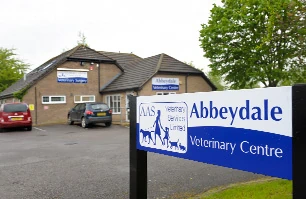Arthritis is a familiar problem for most vets. A large number of dogs, and an increasing number of cats, suffer from arthritis.
Arthritis simply means an inflammation of joints and animals with arthritis usually suffer with pain and stiffness in their joints. Although arthritis is typically a problem in older pets, many animals with arthritis have had signs of disease from an early age, as their arthritis is caused by problems with joint development.
In animals with arthritis (also known as osteoarthritis) the cartilage in the joint changes or becomes damaged so that it is less smooth. The bone surfaces now rub together (rather than gliding) causing discomfort as well as further damage to the cartilage. With time new bone begins to form around the joint and this can cause the joint to become stiff and limit joint movement.
Causes:
- Instability of the joints, e.g. when ligaments have been damaged
- Damage to or abnormal development of the cartilage in the joint or
- Damage caused by trauma such as joint fractures and chronic sprains.
- Old age wear and tear changes to the joint
Signs
- Pain and stiffness in the joints
- Not as keen to exercise as in the past
- Lameness or seem to be stiff (particularly when getting up from rest). This stiffness may get better after being out for a walk, and sometimes cold and/or damp weather may appear to make signs worse.
- Dogs will often lick continually at a painful joint and in dogs with pale coloured coats the saliva may start to stain the fur darker over the affected joint.
- Occasionally the joint may appear hot or swollen but more usually you will not be able to recognise any change in the joint.
- Some pets may just become quieter or grumpier if they are in discomfort.
Diagnosis
- Your vet may suspect that your pet has arthritis from the signs you describe.
- By examining your pet's legs your vet should be able to identify which joints are painful, stiff or swollen.
- X-rays of the joint will help to confirm the presence of arthritis and to identify any underlying causes.
Treatment
The treatment for arthritis depends upon the underlying cause and the joint(s) affected. Treatment of osteoarthritis must be aimed at keeping the joint in use, minimising discomfort, and preserving the structures of the joint for as long as possible.
- Weight loss in overweight animals
- Exercise management
- Minimising the load on the joint
- Maximising the range of movement and the fitness of the muscles around the joint.
- Many patients will also benefit from drug therapy for a few weeks or months, and in occasional cases long-term drug therapy is useful. Initially pain relief is important and the most common veterinary analgesics used are the non-steroidal anti-inflammatory drugs (NSAIDs).
Drugs
Chondroprotection’s
As cartilage damage is such an important part of arthritis it is clearly a good idea to try to limit this. Some drugs may reduce cartilage damage - these are described as chondroprotective. Drugs such as hyaluronic acid, polysulphated glycosaminoglycans and pentosan polysulphate may reduce cartilage degeneration, promote the repair of joint structures, and reduce inflammation. Unfortunately not all of these drugs are licensed for use in dogs and cats and some have to be injected into the joint to be effective. There has been a recent rise in the use of the so-called nutraceuticals. These substances, (primarily glucosamine and chondroitin sulphate) are building blocks for cartilage. The theory is that providing these nutraceuticals in the diet provides the building blocks for the repair of cartilage within the joint and that this promotes relief from the signs of arthritis. There does appear to be some case for their use in the management of long-term osteoarthritis in people, and therefore they may be a useful addition to other therapy in animals. Anti-inflammatory drugs The NSAIDs seem ideal for management of arthritis as they have actions against both inflammation and pain.
The potential problem with these drugs is that they can have some significant side effects. These side effects mean that there are some warnings against their long-term use in dogs, and that their use is quite restricted in cats. In the short-term the drugs with the highest impact on analgesia and inflammation are likely to be the first choice. Often these drugs are not needed in the medium or long-term, or they are not licensed for such use due to the cumulative risk of side effects. In such cases, particularly in cats where the therapeutic options are more limited, alternatives must be sought. New drugs are becoming available and the development of a successful management plan for arthritis in the individual patient requires regular review of the current medication and how the patient is progressing.
The Long Term Outlook
Unfortunately, once the cartilage in the joint has been damaged it rarely repairs completely. However, although there may still be damage in the joint many pets can be made pain free by long-term use of medication and management to control further wear on the joint. There is a great variation in the severity of arthritis between patients. Many pets cope well with their disease, and lead a full and active life without any veterinary treatment. Some patients require treatment ranging from simple lifestyle changes to complex surgery. The signs of arthritis often vary throughout the animal's life and often result in the early onset of joint problems in old age.








